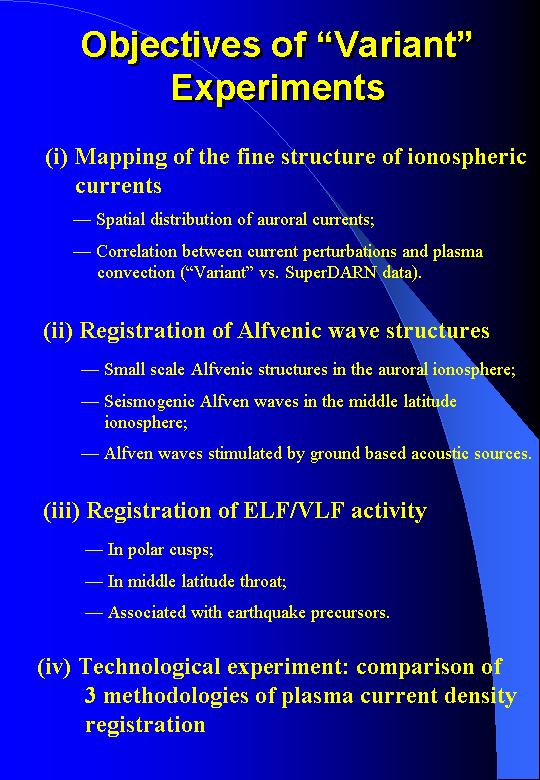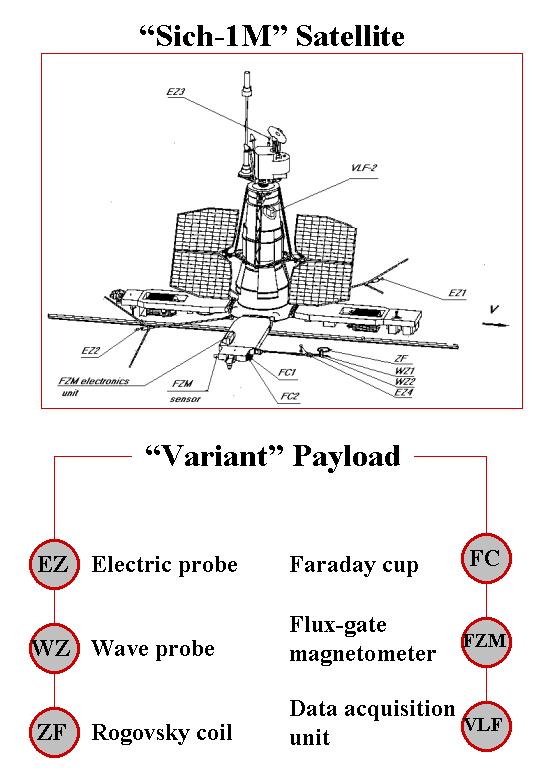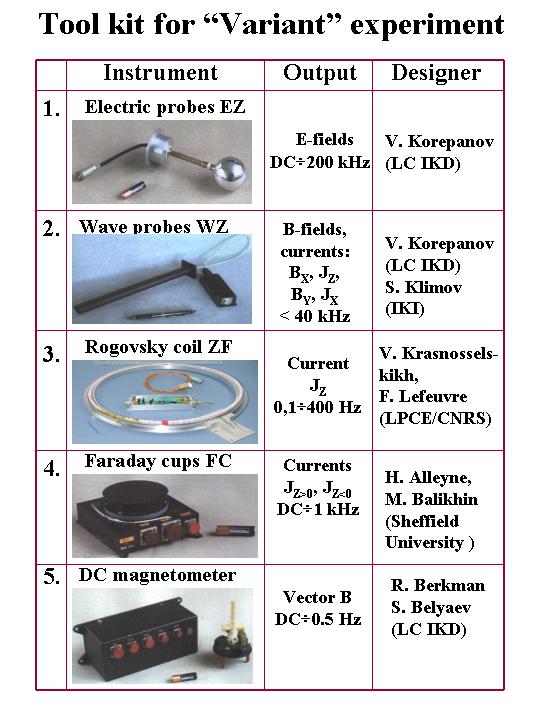INTRODUCTION
It is well known that the parameters of
the ionospheric plasma are primarily controlled by the solar activity. Their sporadic
perturbations usually appear as a response to perturbations in the solar wind and
magnetosphere. The problem of interaction between the solar wind, magnetosphere and
ionosphere is one of the key problems in Solar-Terrestrial Physics, and the wide
scientific community works in special programs dedicated to it. Data base used for such
studies includes data from ground based magnetic stations observations, ionospheric
sounding and the of SuperDARN radars measurements of the magnetospheric convection
phenomena and direct satellite measurements. The goal of these research programs is to
develop the methods of ionospheric-magnetospheric monitoring and to be able to predict
parameter variations.
The modeling of ionospheric-magnetospheric
coupling is a very difficult task. First of all the system is connected to external fluxes
of particles, energy and pulses. Second, the interaction process is rather complicated.
The process of magnetospheric convection controlled by the solar wind is intrinsically
unstable due to the presence of the conductive ionospheric layer. The ionosphere is not a
passive “target” that absorbs wave and particle flows penetrating from the
magnetosphere or “resistance” that short-circuits magnetospheric currents. It provides
an active feedback impact on the perturbations of magnetosphere, and moreover can itself
be the source of the unstable perturbations that in their turn can penetrate and disturb
the magnetosphere. This interaction takes place by means of field aligned currents in the
magnetosphere that are closed by ionospheric plasma through the transverse (Pedersen’s
and Hall’s) conductivity. The variations of this conductivity (that can be caused by
different factors such as, for instance, the ion drag process by the atmospheric winds or
by inhomogeneous heating of the neutral gas or by some other factors) can modify current
distribution and associated global structure of electric fields in the magnetosphere.
Even though there were a large number of
satellite investigations of these phenomena (Bulgaria 1300, S33, GEOTAIL, FAST, INTERBALL,
etc.), still there are many unanswered questions in the problem of
ionosphere-magnetosphere coupling. Namely, one can mention the following :
 | electric current distribution at a day side of auroral
ionosphere, its dependence on the interplanetary magnetic field orientation; |
 | electrodynamics of the polar cusp where plasma is strongly
disturbed by interaction with solar wind; |
 | localization and structure of plasma convection cells of
different spatial scales in the ionosphere (also dependent on interplanetary magnetic
field parameters); |
 | statistical properties and analysis of the role of field
aligned current structures in ionospheric-magnetospheric coupling. |
Solar activity is the main factor that
affects the ionosphere; another is the particles and energy flows penetrating up the
ionosphere, from the Earth. Recent observations reveal that the ionosphere locally
reflects tropospheric phenomena (storms, upward shooting lightning, large cyclones and
atmospheric fronts), anthropogenic factors (rocket launches, especially powerful ones,
descent of spacecrafts, explosions, radio transmitter operations, etc.) and lithospheric
processes (seismic activity, earthquakes, active fractures). The possibility to use these
data for the prediction of earthquakes and monitoring of the anthropogenic and natural
hazards is a new area of current research.
The observed seismo-activity influence on
the ionosphere is rather weak and is usually masked by the solar activity effects. The
seismogenic disturbances are typically detected in the ionosphere under low solar activity
conditions (Kp<4). Nevertheless, making use of modern signal processing methods there
is a hope to extract them if the structural peculiarities of seismogenic “signals”
will be reliably determined. This approach, however, requires a huge amount of
experimental data as well as appropriate theoretical modeling.
The major goal of the VARIANT project is
to carry out direct measurements of current density in the ionosphere combined with the
measurements of the magnetic and electric field fluctuations that can serve as new
elements in the data set of signatures of the solar wind-magnetosphere-ionosphere
coupling. The secondary goal of VARIANT experiment is the statistical study of minor
seismogenic effects and their comparison with the “background noise statistical data
set”.

SCIENTIFIC GOALS OF VARIANT PROJECT

Investigation of
the Global Distribution of Field Aligned Currents, Large Scale Electric
Fields and Ionospheric Plasma Convection
Combined investigation of the high
latitude ionosphere reveals the mechanisms of energy transfer through the chain ‘solar
wind ® magnetosphere ®
ionosphere’. Charged particle beams ejected from the magnetotail to
ionosphere precipitate in aurorar oval zones. Solar wind particles can
directly penetrate into ionosphere through the polar cusp causing optical
emissions and additional plasma ionisation. Due to the high transverse
conductivity longitudinal currents circuit by ionosphere leads to the
modification of electric field distribution in the magnetosphere. Finally,
the global distribution of electric currents reflects the structure of
magnetospheric fields as well as the ionospheric plasma state (inhomogeneity
of the transverse ionospheric conductivity, peculiarities in neutral
atmosphere motion, etc.). Experimental investigation of these phenomena
requires the measurement of currents and electric and magnetic fields in the
high latitude ionosphere what is the major goal of the VARIANT mission.
Correlated Study of the Field
Aligned Current Variations and the Small Scale Structure of the Magnetospheric Convection
Making Use of Simultaneous Measurements of the Radar Chain SuperDARN and SICH-1M Satellite
SuperDARN radar network is dedicated to
study the magnetospheric convection in polar regions by means of incoherent scattering.
The northern hemisphere network currently consists of six radars that determine two
components of bulk velocity of plasma in the E- and F-regions. The measurements are
provided in the regime of monitoring and the distribution of data in the form of a CD-set
is available. LPCE group carried out the study of the phenomenon of the demagnetization of
ions and the formation of the small scale divergent structure during the process of the
reconstruction of the convection pattern in the evening sector. It is supposed that this
process is accompanied by the field aligned currents in the magnetosphere and ionosphere.
We propose to carry out simultaneous measurements using ground based radar facilities and
VARIANT onboard measurements.
Investigation of Wave
Processes in Polar Cusp Plasma
The proposed scientific payload allows one
to measure the electromagnetic field and electric current fluctuations in the frequency
range that contains characteristic plasma emissions associated with lower hybrid
oscillations, ion cyclotron waves and ion acoustic waves, as well as wide band emissions
at the ionospheric level. These emissions are characteristic for the polar cusp region
which is well covered by the proposed SICH-1M satellite orbit.
The polar cusp is a region of free and
direct access of the solar wind into the inner magnetosphere and it is assumed also to be
the site of the turbulent plasma flow. Theoretical models of the solar wind interaction
with the Earth’s magnetosphere predict the presence of complicated structures of the
plasma flow in the cusp’s narrow neck with vortices and turbulent zones of field line
reconnection. At lower altitudes strong field aligned current sheets and filaments
accompanied by ion cyclotron and higher frequency waves have been discovered by the OGO-5
and Viking satellites. The investigation of plasma wave spectra in the region of the polar
cusp is the one of the goals of proposed experiment.
Study of the ELF/VLF
Emissions in the Ionosphere Associated with the Seismic Activity
Small variations of the ionospheric plasma
parameters can carry indications of the Earth’s seismic activity. In a few hours or days
before earthquakes the variations of spectra and intensity of air glow, ULF-VLF
electromagnetic fields, various ionospheric plasma phenomena are detected by satellites
and ground based facilities in the vicinity of the epicentre of the future earthquake.
Today the understanding of the nature of these phenomena is far from being complete. Its
investigation is related to such problems of ionospheric plasma physics as energetic
balance of the ionosphere and its properties as the electromagnetic medium.
Electromagnetic emissions are the typical
signatures of seismogenic effects in the ionosphere. Most of the observations onboard
satellites that have detected such emissions observed in the VLF range (as whistler mode)
and more seldom in the ULF range (as Alfven mode). A great amount of data have been
obtained by Intercosmos-18,19 and 24, OGO-6, Nimbus, Aureol-3, GEOS-2,
Intercosmos-Bulgaria-1300, DE-2, COSMOS-1809 missions. Specific noise-like VLF
electrostatic emissions have been detected in the range of few tens kHz over the
earthquake epicentre within 200 to 300 km in the latitudinal direction and over a greater
distance in the longitudinal direction. These emissions originate about 10 to 20 hours
before the main shock and continue over about the same time after it. They reach their
intensity peak at the instant of the main shock. ULF ~1 Hz-oscillations have been recorded
several hours before the main shock in a narrow magnetic field tube (40...100 km along the
satellite trajectory) originating in the epicentre of the earthquake. In the case of
moderate earthquake (M = 3.5...5) the magnetic field disturbances have values of the order
of 0.2...0.5 nT/Hz1/2 at altitudes of 800 to 900 km and frequency about 8 Hz.
To improve the reliability of such data is also one of the goals of this proposal.
Investigation of the
Infrasonic Wave Effect upon the Ionosphere; Active Experiments with Ground Based Sources
of Powerful Acoustic Emission
Physical mechanisms of seismic effect upon
the ionosphere are not well established. One hypothesis is that the ionosphere experiences
the influence of atmospheric acoustic gravity waves emitted by seismic oscillations of the
Earth surface. Since the frequencies of seismic waves range in the band 0.001…1 Hz it is
natural to speak in terms of the infrasonic channel of lithosphere-ionosphere coupling. It
is supposed that the dissipation of acoustic gravity waves may trigger the instability of
the magnetospheric convection and give rise to the development of perturbations, that can
in their turn propagate from the ionosphere to upwards in the form of the Alfven waves. It
can be assumed that the crossing of the ionospheric dynamo region (at height 80…150 km)
by the infrasonic waves can generate electromagnetic Alfven waves with the same frequency.
Such waves may be registered onboard the satellite.
LCISR operates powerful ground based
sources of acoustic radiation. Preliminary experiments demonstrate the effect of acoustic
waves on the ionosphere including the generation of ELF magnetic field perturbations
caused, probably, by Alfven waves generation. The SICH-1M mission provides a good
opportunity to carry out combined experiments with the ground based emission of acoustic
waves and the detection of ionospheric plasma response by the satellite.
Modification of the
Satellite Plasma Environment by the Operation of Onboard Radar
The VARIANT experiment is a secondary one
onboard remote sensing SICH-1M satellite. The SICH-1M principal payload contains a
powerful radar for Earth observation. The modification of the plasma environment as a
result of the active operation of this radar is one of the important problems which also
can be studied. Previous studies reveal that the operation of a powerful (onboard)
transmitter leads to the excitation of a number of plasma resonance in satellite
proximity. The unique combination of three instruments for the registration of plasma
current and the electromagnetic field in VARIANT experiment will allow us for the first
time to study experimentally the wave vectors which corresponds to different resonances
and to determine experimentally the waves dispersion in plasma reference frame.


PAYLOAD INSTRUMENTATION

Following the major project goal - the
study of the ionospheric plasma response on the influence of the magnetosphere and solar
wind from the top side, and the atmosphere and the Earth, from the botom side, - a set of
electromagnetic experiments onboard the Ukrainian remote sensing satellite SICH-1M is
planned. The satellite will be launched in 2000 in a circular orbit with the altitude of
670±30 km and inclination angle of about 83° . It should cross the main morphological
structures of the ionosphere: middle latitude throat, polar cusps, auroral oval.
Onboard satellite instrumentation includes
three instruments for the registration of electric current density as the main signature
of ionosphere-magnetosphere coupling. These particular instruments should allow in future
the separation of the spatial and temporal variations onboard single satellite. This
possibility is based on the idea to carry out the direct measurements of the current
layers by crossing them. This gives rise to the possibility to determine the current
density of the plane wave, that really allows the independent evaluation of curl B.
If the magnetic field fluctuations are measured simultaneously one can get the
distribution of the k-vectors, and then calculate the real wave frequency. The
scientific equipment devoted to this task includes split Langmuir probe (WZ), Rogovsky
coil (ZF) and Faraday cup (FC). The simultaneous measurements of electric and magnetic
field fluctuations in the ELF/VLF frequency band will be performed making use of the
electric and magnetic fields sensors (instruments EZ and WZ). The waves in this frequency
range are supposed to be associated with different types of the ionospheric disturbances.
They are also assumed to be the most typical signatures of the seismogenic effects. Taking
all this into account, the proposed payload includes 5 types of sensors (table
1).
Table
1. Scientific Payload Proposed for SICH-1M Mission
| ¹ |
Device |
Measurement |
Designed
by |
| 1. |
Wave probe
WZ |
Electric
current density J:
Frequency range 0.1 Hz … 40 kHz,
Noise 10-12 A/cm2Hz1/2
Magnetic field vector B:
Frequency range 0.1 Hz … 40 kHz
Noise 10-13 T/Hz1/2
Electric potential j :
Frequency range 0.1 Hz … 40 kHz
Noise 10-6 V/Hz1/2 |
LC ISR,
Ukraine
(V. Korepanov)
IKI, Russia
Klimov)
CBK, Poland
(J. Juchniewicz) |
| 2. |
Rogovsky
coil ZF |
Electric
current density J:
Frequency range 0.1 Hz … 400 Hz,
Noise 10-12 A/cm2Hz1/2 |
LPCE/CNRS,
France
(V. Krasnosselskikh) |
| 3. |
Electric
probe EZ |
Electric
field vector E:
Frequency range 0.1 Hz … 200 kHz
Noise 10-6 V/Hz1/2 |
LC ISR,
Ukraine
(V.
Korepanov |
| 4. |
Faraday cup
FC |
Electric
current density J:
Frequency range 0.1 Hz ... 1 kHz,
Noise 10-10 A/cm2Hz1/2 |
Sheffield
University , United Kingdom
(H. Alleyne, M. Balikhin) |
| 5. |
DC
magnetometer FZM |
Magnetic
field vector B
Frequency range DC - 1 Hz |
LC ISR,
Ukraine
(R. Berkman, S.
Belyayev) |
The spectral noise density of all sensors
is given for the frequency 100 Hz. The spatial density of electric current will be
simultaneously measured by three independent instruments: split Langmuir probe (included
into the wave probe unit WZ), Rogovsky coil (ZF) and Faraday cup (FC). These measurements
represent a special and very important task of the experiment which procures the unique
possibility to justify, validate and compare three existing methodologies of the
ionospheric current registration in space experiment as well as to perform the
inter-calibration of the instruments. The proposed scientific payload also includes a VLF
analyser and allows fulfilment particular objectives of SICH-1M experiments.

GROUND SUPPORT
One of the main goals of the VARIANT
experiment is the comparison between different measurement methods. It supposes that each
instrument will be thoroughfully tested separately first. Then all experiments will be
integrated and their joint operation investigated with the aim to study the radiation of
all sub-systems, both of the scientific payload and of the satellite. Also ground tests
involving data simulation and decomposition of output files and their comparison are
planned.
The ground support program has to involve
the development of procedures for data collection, transmission and storage. Also a data
evaluation program has to be developed for quick-look information, test of satellite
operation, calibration and finally data validation and archiving.
It is necessary to foresee during the
active phase of the experiment the possibility of changing the on-board software both for
the satellite subsystems and scientific payload, in order to develop the procedure of
telecommands and telemetric data acquisition. Taking into account the originality of the
project and the importance of obtained information for further interpretation, data
validation and archiving procedure has to be developed. Collaboration with the “Centre
Francais des Donnees de la Physique de Plasmas” (CDPP) is planned. A special program
will be arranged to determine the data format with the requirements of CDPP. |
